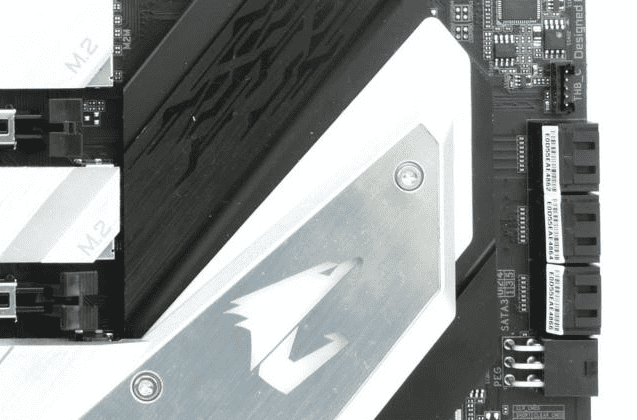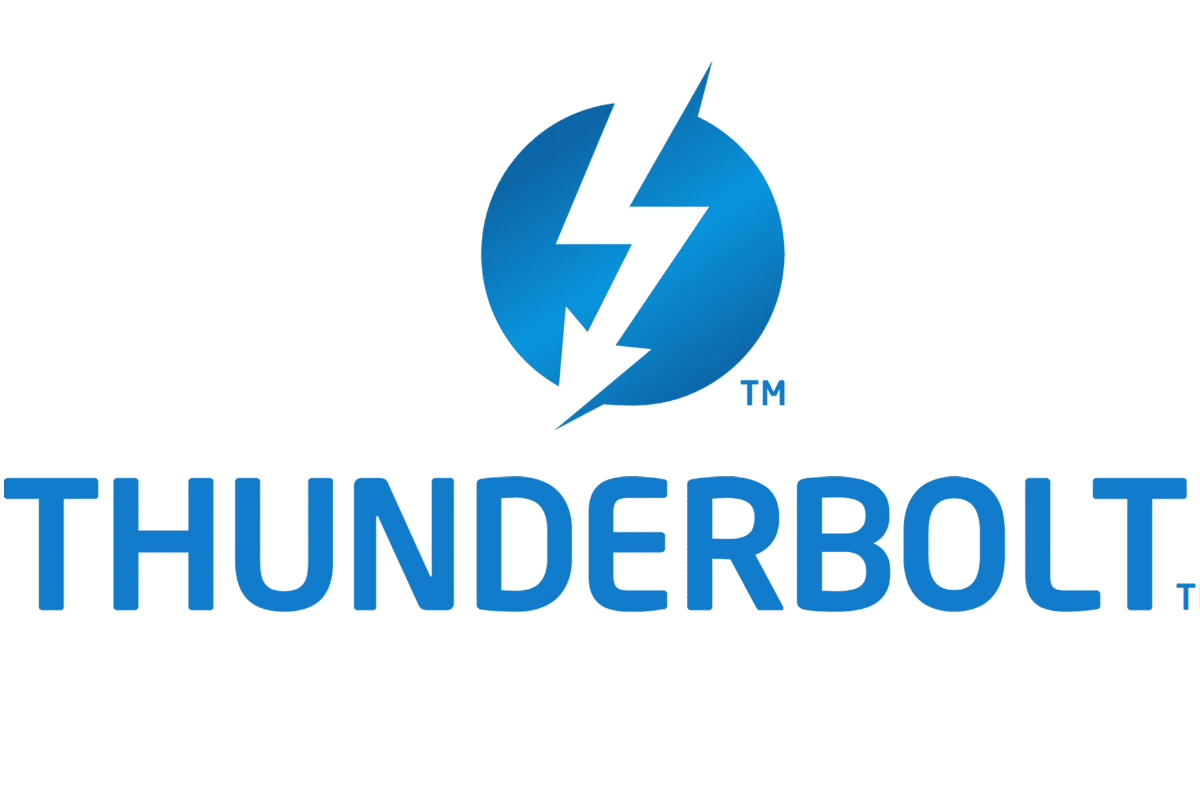The Thunderbolt header on a motherboard plays a special role as it connects the board to Thunderbolt-capable devices. Thunderbolt, which was created by Intel and Apple, is a high-speed data transfer interface. If a motherboard doesn’t have native Thunderbolt ports, the Thunderbolt header enables the connection. It serves as the point of connection for a Thunderbolt add-in card, linking the motherboard to devices that utilize this technology.
The presence of a Thunderbolt header demonstrates forward compatibility and flexibility in system design. It allows users to upgrade their systems with Thunderbolt capabilities without needing a motherboard that has built-in Thunderbolt ports. This is particularly valuable for users who may not require Thunderbolt at the time of building their PC but want to keep their options open for future expansion.
A Thunderbolt header on a motherboard allows you to connect devices to your computer using a Thunderbolt port:
- Data transfer: Thunderbolt ports allow for high-speed data transfer.
- Video output: Thunderbolt ports can output a video signal.
- Power delivery: Thunderbolt ports can deliver power to compatible devices, including charging laptops.
- High-resolution displays: Thunderbolt ports support high-resolution displays.
- High-performance data devices: Thunderbolt ports support high-performance data devices.
Thunderbolt ports use the same connector as Mini DisplayPort (MDP). Thunderbolt and USB-C cables and ports look similar and perform nearly the same functions, but Thunderbolt connectors transfer data much faster.
What is a Thunderbolt Header?
| Topic | Description |
|---|---|
| Definition | A Thunderbolt header is a connector found on some motherboards that enables you to add Thunderbolt capabilities to your computer. |
| Purpose | It allows you to connect the following: * Thunderbolt Expansion Card: Adds Thunderbolt ports directly to your computer for high-speed data transfer and device connectivity. * Front Panel Thunderbolt: Connects to cases with built-in front panel Thunderbolt ports. |
| Compatibility | Thunderbolt headers are designed to work with Thunderbolt expansion cards and other Thunderbolt-enabled devices. |
| Benefits | * High-speed Data Transfer: Thunderbolt offers lightning-fast data transfer speeds (up to 40 Gbps with Thunderbolt 3/4). * Daisy-chaining: Connect multiple Thunderbolt devices to a single port. * Versatility: Supports various devices like external storage, displays, docks, and eGPUs. |
| Appearance | Thunderbolt headers usually have 5 to 14 pins and may be labeled “TB_HEADER” or similar on the motherboard. |
Important Notes:
- Not all motherboards have Thunderbolt headers. Check your motherboard’s manual or specifications to see if it’s included.
- Thunderbolt versions: Be aware of the supported Thunderbolt versions (Thunderbolt 1, 2, 3, or 4) for your motherboard and any expansion cards you plan to purchase.

Key Takeaways
- Thunderbolt headers allow for the addition of Thunderbolt technology to motherboards without onboard ports.
- These headers enable high-speed data transfer and the connection of multiple devices.
- The integration of a Thunderbolt header ensures system upgradability and versatility.
Understanding Thunderbolt Technology
Thunderbolt technology stands out for its high-speed data transfer capabilities and versatile uses. This section will look at its standards, differences between versions, association with PCIe, and compatibility with other connectors.
Evolution of Thunderbolt Standards
Thunderbolt technology has progressed significantly since its inception. Thunderbolt 1 provided 10Gbps bandwidth, doubling to 20Gbps with Thunderbolt 2. Thunderbolt 3 further increased performance with a 40Gbps bandwidth.
Thunderbolt Header Types
| Type | Pins | Data Transfer Speed | Notes |
|---|---|---|---|
| Thunderbolt 1 | 10-pin | Up to 10 Gbps | Older standard, less common on newer motherboards |
| Thunderbolt 2 | 10-pin | Up to 20 Gbps | Also less common on newer motherboards |
| Thunderbolt 3 | 14-pin | Up to 40 Gbps | Most common on modern motherboards |
| Thunderbolt 4 | 14-pin | Up to 40 Gbps | Same speed as Thunderbolt 3, but offers additional features and compatibility with USB4 |
Thunderbolt 3 vs Thunderbolt 4
Thunderbolt 3 and Thunderbolt 4 both offer 40Gbps bandwidth. Thunderbolt 4 maintains this speed while supporting 800Gbps of PCIe bandwidth, enabling better performance. It ensures support for two 4K displays or one 8K display, and it is backward compatible with earlier versions.
The Role of PCIe in Thunderbolt
PCIe stands for Peripheral Component Interconnect Express. In Thunderbolt technology, PCIe lanes play a crucial role by enabling low-latency and high-speed data transfer between the computer and connected devices.
Thunderbolt, USB-C, and USB4 Compatibility
Thunderbolt 3 introduced a USB-C connector, merging the benefits of USB-C’s versatility with Thunderbolt’s speed. Thunderbolt 4 continues this trend and ensures compatibility with USB4 and USB 3.1 devices, offering a broad range of connectivity options.
The Function of Thunderbolt Headers on Motherboards
The Thunderbolt header on a motherboard acts as a crucial contact point. It allows for high-speed connections between the motherboard and various devices using Thunderbolt technology.
Connection Interfaces and Pin Configuration
The Thunderbolt header typically includes pins for connection and is specifically designed to link the motherboard with Thunderbolt-enabled devices. The ThunderboltEX or THB_C header features a pin configuration that aligns with Thunderbolt expansion cards or front panel connectors. This pin setup may often incorporate a DisplayPort input to facilitate video data.
Thunderbolt Support Across Different Motherboards
Leading motherboard manufacturers like Asus, Gigabyte, MSI, and Intel integrate Thunderbolt headers on some models. These headers are more likely found on high-performance boards that cater to powerful processors and PCs, such as Intel’s B550 series. The availability of a Thunderbolt header indicates that while the board may not have built-in Thunderbolt ports, it supports an upgrade through an expansion card.
Utilizing Thunderbolt Expansion Cards
To enhance a system with Thunderbolt capabilities, users can connect a Thunderbolt expansion card to the PCIe slot and link it to the motherboard via a header cable. This setup bridges the Thunderbolt hardware with the PC, facilitating features like high-resolution displays and fast data transfer.
Thunderbolt headers, alongside USB headers and general-purpose I/O (GPIO), expand the potential for adding hardware to a motherboard. By understanding the purpose and usage of the Thunderbolt header, users can maximize their systems for advanced technology needs.
Frequently Asked Questions
Exploring the impact of a Thunderbolt header on a motherboard will clear up common queries. It will detail the advantages for gaming, compatibility with USB-C, and why incorporating this technology is advantageous for desktop computing.
How does the Thunderbolt header improve connectivity on a motherboard?
The Thunderbolt header enables motherboards to harness Thunderbolt technology’s high-speed data transfer and daisy-chaining capabilities. This allows for connecting multiple devices to the motherboard without compromising speed or performance.
What advantages does a Thunderbolt header provide for gaming setups?
A Thunderbolt header significantly reduces latency and allows for faster data transfer. This improves gaming experiences by supporting high-resolution displays and rapid loading of large game files.
Is the Thunderbolt header compatible with USB-C devices?
While Thunderbolt uses a USB-C connector, compatibility depends on the device and motherboard. Some systems allow Thunderbolt to work with USB-C devices, but it’s essential to check device specifications for seamless function.
What are the benefits of using a Thunderbolt header adapter?
Using a Thunderbolt header adapter ensures that devices without built-in Thunderbolt ports can still connect to Thunderbolt-enabled devices. This expands connectivity options and increases the functionality of existing motherboards.
Why might someone need a Thunderbolt connection on their desktop motherboard?
A Thunderbolt connection is beneficial for tasks that require high-speed data transfers, such as video editing or transferring large files. It’s also useful for connecting multiple high-performance devices without degrading the overall system’s speed.
What to look for when choosing a motherboard with a Thunderbolt header?
Consider the number of available Thunderbolt ports, the versions of Thunderbolt supported, and the maximum data transfer rate. Compatibility with existing devices and future-proofing for new technologies are also crucial factors.





